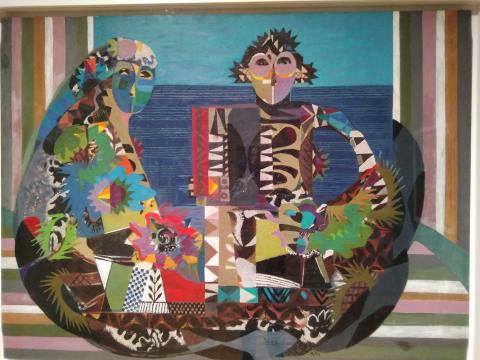All Who are in the Tombs

Eileen Agar’s 1960 oil on canvas depicting Orpheus and his Muse is a cheerful, colourful affair. Orpheus was considered the best musician and poet in Greek mythology. Through his music he was able to charm animals and make trees dance. He was also able to convince Hades, god of the underworld, to free his deceased wife and muse, Eurydice, with the one stipulation that he was not to turn around and watch her as she exited Hades' kingdom. However, Orpheus defied Hades' instruction and lost Eurydice for a second time, leaving him grief-stricken and unable to sing. Agar presents the lovers in a happier time; through geometric pattern and overlapping planes, the pair seem to float, perhaps in a boat, in an equivalent and harmonious union that celebrates the power of love and creativity. Yet it is a tragic tale. Those who die without Christ may look back at happy times, but from the gates of hades they cannot be released. Orpheus was a failed and disappointing rescuer. He got so close and then lost her again. Thank God, our Jesus did far better. He rescues to the uttermost all those who trust in Him, not just the attractive and the convivial.
Do not marvel at this; for an hour is coming, in which all who are in the tombs will hear His voice, and will come forth; those who did the good deeds to a resurrection of life, those who committed the evil deeds to a resurrection of judgment. John 5:28-29
- Log in to post comments


 Sunday Worship 10.45am & 6.00pm
Sunday Worship 10.45am & 6.00pm